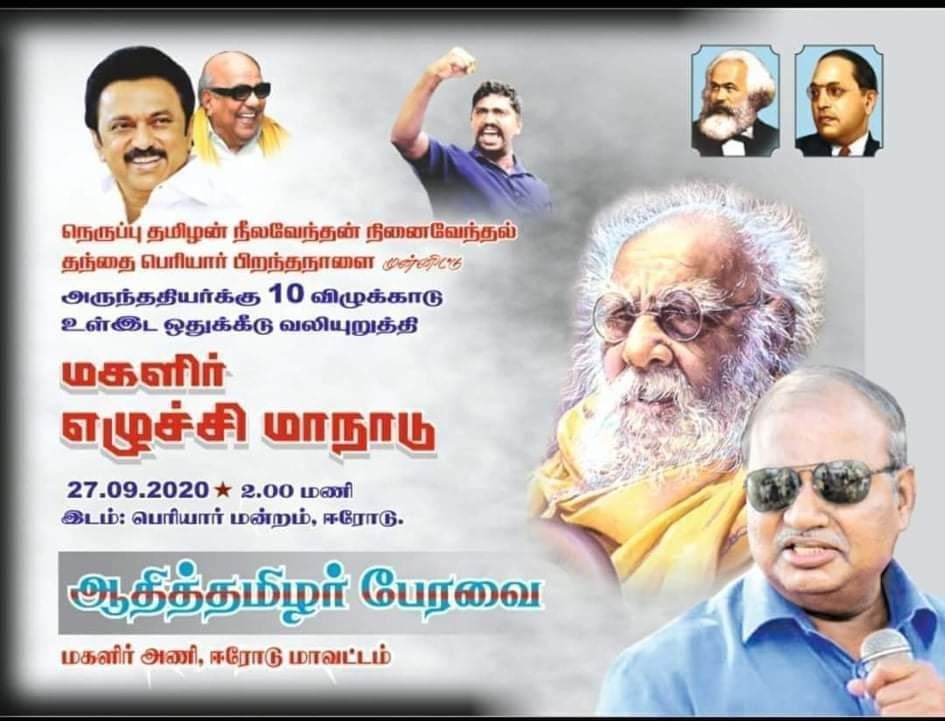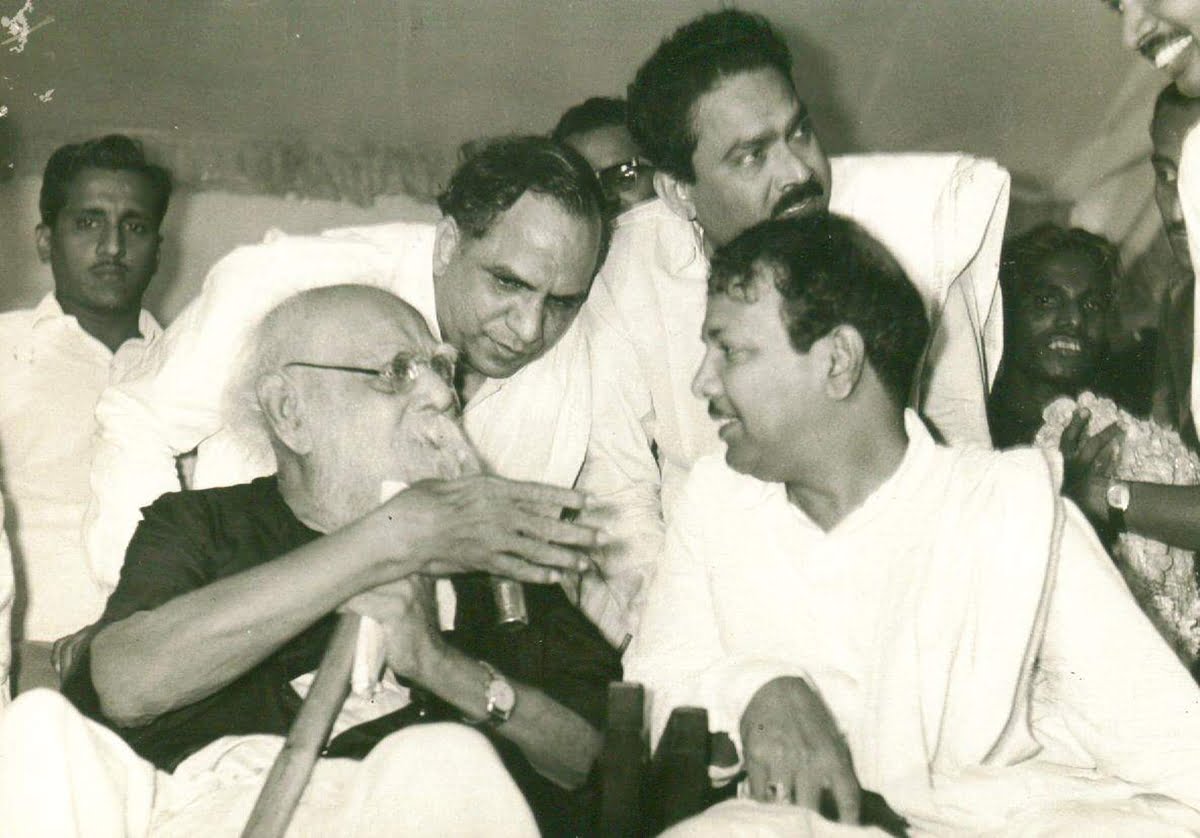Forty-seven years after the death of Periyar, he is still an unparalleled social reformer and a feminist. The continuation of the Dravidian rule even after his death did not make it any easy for women to what Periyarism ought to have done. The one reason for this is that, while Periyar E V Ramaswamy was a feminist icon to women, he was more of a rationalist and a political icon for men.
Even though Dravidian rule continued after the death of Periyar, women did not attain liberty the way Periyar dreamt they should have. For instance, MK Kanimozhi, the daughter of former CM M Karunanithi, is not given a prominent role in the party despite being worthy of candidature.
Even though Dravidian rule continued after the death of Periyar, women did not attain liberty the way Periyar dreamt they should have. For instance, MK Kanimozhi, the daughter of former CM M Karunanithi, is not given a prominent role in the party despite being worthy of candidature. On the other hand, the son Udhayanithi Stalin, the son of MK Stalin, is a film producer, distributor and actor who will naturally inherit the party leadership after his father.
Further, in the poster of a recent magalir maanaadu (women’s conference) meeting of Aditamilar Assembly, there is no photo or information of any woman attending the conference.

Also read: Periyar E V Ramasamy: A True Leader Of The Marginalised
Instead, women have become slaves to the work environment as well. This is mainly because the male population perceived Periyar only as a rational and political icon, but not as a feminist icon.
However, with feministic ideologies, Periyar was able to shake it to an extent that the men realised this but failed to or had limitations to mobilise the collapse the institutionalised taming of the women in Periyar’s time. This had potentially woken the alarm of the oppressing gender and they were able to find a niche in developing an immunity to resist women’s uprisings in status on par with men. In this regard, one of the disadvantages of women’s unequal status was men developing esistant immunity and the latter’s readiness to mainsplain to women in developing media arts. This gap, had it been minimized, the outcome would have inched closer for a better society for women, as envisioned by Periyar.

The patriarchy of Periyarist men is so solid and innate that while they do not really have any criticisms of Periyar’s feminism, they simply do not feel the need to follow it in their lives. Usually, the followers of any leader would agree to most of their ideologies and would even reject a few. Here, with Periyar, the ardent, hero-worshipping followers agree on all grounds over feminism except for following it purposely. This shows us how men had adapted only the ideologies of Periyar that suited them and shows them cool in the eyes of the society (like atheism, anti casteism, etc.,).
Compared to say, atheism, feminism needs more than just accepting and acknowledging. To establish one’s self as feminist is to give up luxury, comfort, and privileges accorded by patriarchal structures. Instead, they remained conveniently silent about it for nearly half a century after Periyar.
This is the reason why most Periyarists may be anything but feminists. And by naming themselves Periyarists they often just limit their identity to being admirers of Periyar. Talking Periyarism has given them an undeniable social status which they would not like to back from.
The difference between a Periyarist and a feminist cis-gender man who has a different role model for deminism would simply be about practicing real equality. Unlike Periyarist-feminism, the latter’s feminism need not necessarily be a result of admiration or hero-worshipping or political inclination towards Dravidianism but by the actual realisation of equality.
It becomes clearer to identify that now more men than women need Periyar for their personal evolution to meet the society’s standards. Women would, with no effort, grow independent, rational, and empowering if religion and culture are not enforced. Whereas, men would need exclusive behavioral therapies, to unlearn patriarchy.
Following Periyar’s teachings, women have developed in academics and career, but the only reason women are still oppressed is that men were not advised or given protocol on how to treat and co-exist with women. And had the men who identify as followers of Periyar developed a more pragmatic approach and interest in Periyar’s feminist ideals, they could have been better feminist allies today.
It is to be noted that Periyar had written a book on “Pen aen adimai aanaal?” (Why women became slaves?) as if women had voluntarily changed themselves to slaves. Had Periyar titled the book, “Aan aen pennai adimai aakinaan?” (Meaning: Why men made women as slaves?), it would have been an eye-opening guide for men rather than a book meant for women to learn and grow.
Also read: Periyar Rally In Trichy: An Anti-Caste And Anti-Fascist Movement
Women would then have had a reference guide to throw at every time men dismissed equality. The book, in the hands of the Periyarist men, could become an instrument for furthering patriarchy on fellow women friends to ‘learn, grow, and develop’, with growth as an aspect that is enforced on women by the ‘saviour Periyarist men’.
Women would then have had a reference guide to throw at every time men dismissed equality. The book, in the hands of the Periyarist men, could become an instrument for furthering patriarchy on fellow women friends to ‘learn, grow, and develop’, with growth as an aspect that is enforced on women by the ‘saviour Periyarist men’.
An old Tamil movie song lyric goes, “Thirudanaai paarthu thirundhaavittaal thiruttai ozhikka mudiyadhu” (We cannot stop robbery unless the thieves realise that on their own). On this birth anniversary of the great social reformer and revolutionary icon that was Periyar, as his feminist followers it is all the more important to reiterate on how it would be simpler for us to be practical and flatten what peaks the ego of the Periyarist men who think feminism is not in vogue.
Kanmani is a biotechnologist. Her ambition is to do her doctorate. She likes to write about the socio-political and cultural struggles of women in India. She is interested in biology, evolution, environmental science, graphic designing, and different approaches to learning.
Featured Image Source: The New Indian Express




